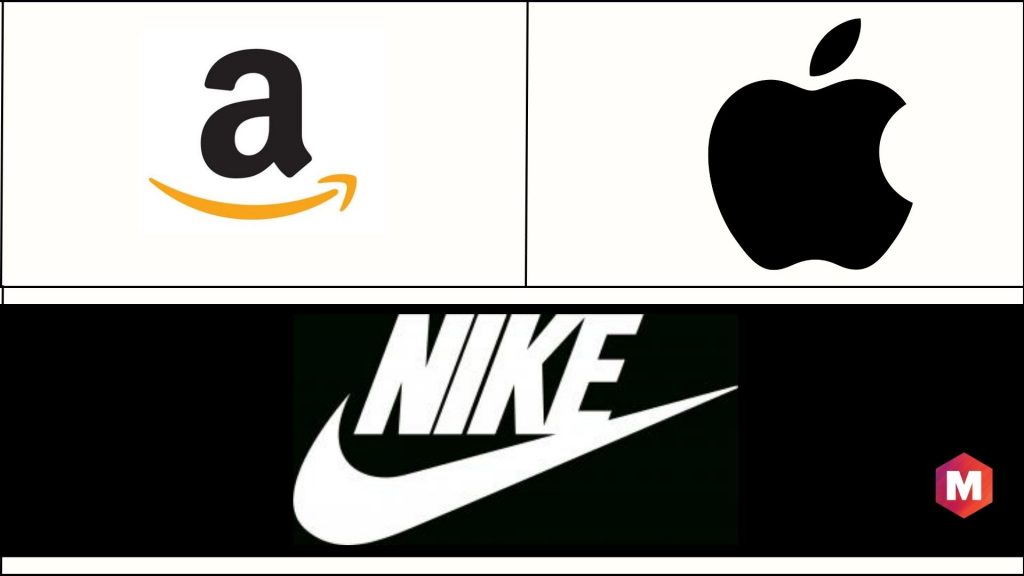Through customer insights, businesses gain a much deeper understanding of the behaviors and preferences of their customers. The customer data can be used to effectively refine marketing, sales, and service strategies for improved outcomes.
For example, ABC Financial decides to leverage customer insights to optimize customer satisfaction. It recognizes its customers’ preference for faster & more efficient services. It then implemented online banking for its clients. This way, customers can quickly and conveniently finish their banking transactions.
Today’s market has become more customer-centric than it was ever before. Gone are the days when products were used to define the markets. Now it’s the customers who run the market and servicing customers in the best and fastest possible way determines the success or failure of a product. Therefore, successful businesses delve deep into consumer insight and use it to personalize their marketing and business strategies as per target customer behavior to enhance customer experience and optimize customer retention.
Table of Contents
What are customer insights?
Customer insights provide organizations with a clearer picture of their customer’s behavior, preferences, and buying patterns. By gaining access to customer insight data, businesses can develop more effective strategies to effectively reach and engage their customers.
Microsoft research shows that businesses leveraging customer data experience 85% higher sales growth than those who don’t.
To gain a full understanding of customers, it is important to acquire and analyze both quantitative and qualitative data from a variety of sources. Customer analytics offers a quantifiable data-based understanding of customer behavior, providing more insight than traditional market research. For using valuable customer insights effectively, you need-
1) Quality data
Accurate and reliable data is essential when collecting insights. Inadequate data quality can adversely affect the final results or outcomes.
2) Analytics team
As a business, having an efficient data analytics team is essential for acquiring insights into your customers’ behavior & preferences. Without a knowledgeable team, it is difficult to interpret the data and comprehend what it is actually saying.
3) Consumer research
It’s essential to grasp consumer behavior and use consumer insights to emotionally connect with customers. Doing so will help build strong customer relationships & increase customer loyalty.
4) Database and segment marketing
Database marketing utilizes customer data to create personalized communication experiences. This type of marketing makes use of personas, segments, or distinct audience sets to provide focused messaging.
Common Examples of Customer Insights
Common examples of customer insights include –
- Demographic and psychographic data about customers
- Customer purchase history and spending patterns
- Customer feedback and sentiment analysis
- Customer segmentation
- Customer journey mapping
- Customer lifetime value
- Trends in customer behavior and preferences
- Channel preferences and usage
- Product usage, preferences, and trends
Why Brands Need Customer Insights
1) Sales management
Insights help companies to prepare and equip themselves according to current and upcoming trends. Companies can modify themselves accordingly and prepare themselves to serve a better way to customers. For example, if the data shows that during Christmas, people tend to shop more, companies can launch special offers and discounts during Christmas to pull more customers.
2) Inventory management
Insights also will determine the approximate inventory that will be required for a particular month, year, or period. Thus the company can arrange the same to avoid being over or understocked.
3) Better business decisions
It also helps in making better business decisions. The company can modify its products the way customers want and leverage business from the market. For example, in the case of juices, if the majority of customers prefer Orange juice instead of banana milkshake, then the company can focus more on producing Orange juice rather than being at a loss with Banana Milkshake.
4) Product placement decisions
A TV show is the best way to target the audience for the product. If the customer insights show that the majority of kids watch a particular cartoon show every evening, then it makes sense for chocolate and dairy companies to advertise during those hours. This can be possible only by using insights. Also, the morning time is the time for the commute to school and parents drop their kids off. This would be the best time to advertise stationary and other school materials along the road or metro.
5) Better Products and Services
Getting feedback from customers related to current offerings and asking them about future needs and wants helps the company to invest in products that are sure to sell in the market. Certain products that the company launched may be good but to make them better, customer insights input is important. Market research will help to bridge that gap along with customer insights.
Types of Customer Insights to Collect and Analyze
1) Website data
It is essential to understand customer needs, drivers, and pathways to purchase for successful business operations. To help with this, there are sources of website data available such as demographic data which covers information such as the age, location & job title of customers. You may go through behavioral data, and campaign data as well to find out key website data.
For collecting website data, you may use Google Analytics, Google Search Console, etc.
2) Purchase activity data
Monitoring the purchasing habits of your customers helps you gain insight into which products are the most in-demand ones among the group and across all customers in general.
By analyzing the data, you get an understanding of patterns like predictable spending, buys influenced by emotion, and well-thought-out decisions. With this knowledge, you can identify which items to promote and when they should be marketed.
Using CRM, E-commerce platforms sorts of tools can help in doing this.
3) Online reviews
Online reviews give you the unique opportunity to gain insight into the experiences of your customers. This feedback, known as voice-of-the-customer (VoC) data, can be extremely helpful in understanding how they perceive your product and services.
If you own an ecommerce website or are running a startup, it might be helpful to read what customers have to say about your business on their product page as well as on Google, Yelp & Facebook. Through reviews, you can get insight into customers’ observations which can help improve your product. To stay informed about customer feedback & complaints, product teams, and Saas businesses should regularly check niche review sites such as G2, Trustpilot & Capterra.
4) Competitor reviews
Just like online reviews, looking at your competitors’ reviews can give you an insight into what customers look for and what kind of decisions they make while buying products. This can help you spot trends in customer behavior and prepare accordingly.
Keeping track of competitors’ reviews can provide valuable insights on how to improve your product and identify unique ways you can stand out in the current market. Checking review websites and using Google Analytics sorts of tracking tools can help you with this.
Tools like SimilarWeb, SEMRush alternatives, or Google AdWords can also help with this.
5) Customer service data
Maintaining records of customer service data can be useful in determining the concerns customers frequently have with your product or service. It can help you identify any potential areas that may cause client dissatisfaction & facilitate measures to avoid it.
By carefully analyzing customer grievances, queries, and requests for assistance, businesses can identify areas of improvement in their products & services. This allows them to prioritize which upgrades should be made first.
You can use customer support tickets, chatbot or live chat data, etc for collecting customer service data.
6) Customer feedback
Interviews and surveys are an effective way to gain direct insights into customers’ experience, journeys, & satisfaction with your brand. This customer feedback can be extremely useful in improving current products and services.
It is essential to include both closed- and open-ended questions in customer experience surveys and interviews for a comprehensive understanding of customer sentiment. This data can then be used to target specific UX design changes & improvements.
You can also use segment survey campaigns, get your CSAT survey can help you do this.
7) Case studies and testimonials
Case studies & testimonials are two of the most valuable forms of customer feedback.
They provide detailed accounts of the problem and how your solution solved it, thereby helping you showcase the efficacy of your product or service.
You can collect customer data by using email surveys, rewarding customers who opt to participate, etc.
8) Social media
Social media is an invaluable tool for businesses to acquire customer feedback, and insights into use cases and track complaints. It can be a great source of data to inform marketing & product decisions.
With the use of social media tools, you can easily monitor relevant customer conversations, view popular videos and gain valuable insights about your product’s trends. Additionally, it helps in understanding customer feedback and addressing issues that don’t make sense to them.
You can do this by polling your audience, using social listening tools, and leveraging social media analytics.
How to get Customer Insights?
Following are the steps that can be taken to get customer insights:
1) Customer Monitoring
Marketers should continuously monitor customer activities when it comes to buying a product. The steps taken by the customer, the means of need generation, ways to which customers respond, all of it should be carefully collected. While the collection is one part of it, the more difficult part is understanding the data and applying it for the benefit of the company.
Customer monitoring includes data collection and monitoring as well. Online e-commerce websites give such insights useful for marketers. The login time of the customer on an app, the browsing history, amount of time spent on every page or product, time taken to decide, and all such relevant activity can be accessed easily which will help such apps to place the product according to the preference of the customer.
For example, if the search shows that the majority of customers have searched for a white variant of iPhone XS Max on Amazon, then Amazon will make the product available and increase the cost, while if the Rose Gold version of the same phone is not being searched for, then the company may drop its price to push the sales.
With online analytics available for free of cost, companies simply have to go and read. The entire analysis is presented in a detailed format. Facebook Insights and YouTube Analytics are a few such examples. Right from customer logging time to the best time to post a distinction of customers according to age, gender, etc is freely available and can be utilized.
2) Customer Input
While customer monitoring certainly sheds a light on customer insights, direct customer input is valuable. Customer monitoring data may or may not match accurately with the exact customer psychology.
For example, the data may show that a particular customer spends X amount every Saturday at a particular coffee shop but in reality, the customer may have been buying that coffee for someone else. In such cases, direct customer input or feedback works better for determining customer insights.
Feedback can be collected after the purchase to rate the experience or the product and it can also be collected before as a part of the survey. Here the important step would be framing proper questions to give proper insights. The questions should be direct and based on the type of customer. If the customer has more time, then open-ended ones are preferred while if the customer is in a hurry, direct closed-ended questions work.
Waiting rooms, airports, and other leisure places are good to collect customer feedback. Customer input will help to clear the mist around the questions raised by customer monitoring. Customer feedback made the iPod possible.
In the 90s, Sony Walkman was the market leader but carrying around such a brick-like object was a problem for a customer. Also, Cassettes had a capacity of limited songs. Apple collected the feedback and launched iPod – small and compact with songs so many that the Walkman could never have had stored in it.
3) Build Relationships
Great customer relations equals great customer insights and in turn great business. This is also true in the case of vendor relationships. At times, vendors and sellers who are in direct contact with customers, know better about customers than the company. Collecting data and feedback and having relations with vendors can help the company a long way.
Great customer service is yet another way to build relations. When a device or product breaks down, the sooner the company can replace it, the better the experience of the customer which will help the company to build trust with customers and a long-term association along with the long-term business.
Here is a video by Marketing91 on Customer Insights.
How to Apply Customer Insights
1. User testing should be used to inform changes
User testing is essential before making changes to a product or service
It provides feedback on how the target audience interacts and enables improvements to their experience.
User testing is a great way to identify improvement opportunities and potential issues, and the feedback can be used to improve the product or service.
2. Data should be used to track wins and ROI
Analyzing data would be helpful for companies in measuring the success of their campaigns and ROI. During customer experience management, tracking actionable insights helps marketers to understand customer behavior and accordingly maximize customer lifetime value.
Data analytics allow businesses to measure the success of their marketing strategies, allowing them to maximize effectiveness and reduce inefficiency.
Examples of Brands using Customer Insights
1) Amazon
Amazon uses customer data to inform pricing and product selection decisions, such as preferences, patterns, and browsing habits. It also leverages customer feedback to continuously improve its products & services, ensuring customers have the best possible experience. Amazon uses customer reviews to create products and features that better meet customer needs.
2) Apple
Apple listens to customer feedback and incorporates it into its product and feature designs. This has helped the company become a leader in innovation and its products to be highly sought after. Apple uses NPS (Net Promoter Score) surveys to measure customer satisfaction after purchases and the likelihood that customers will recommend their products.
3) Nike
Nike Fit is revolutionizing the way customers find their perfect-fitting shoes. Innovative technology such as computer vision, artificial intelligence, and machine learning are used to build a digital model of your foot to give recommendations of products that are perfectly tailored to your needs.
Advantages of Customer Insights
1) Early bird advantage
The better the study of Customer Insights, the better a company can predict future trends and get an early-bird advantage. They can pre-quip themselves with the necessary tools to serve the customers better and gain a competitive advantage.
2) Market Share
Customer insights will help decide a customer-centric course of action for the company. This will help in the business turnover as well as in increasing the profits by maximizing sales. This will help the company to tap the untapped opportunities in the market and if the offering – product or service – is better than competitors, then it will also increase the market share of the product
3) Change with time
Customer insights determine the current and probable future wants of the customers and the company should change accordingly. If the company fails to change, then it will result in the perishing of the company or product. Times change and customers change and companies have to catch up with them by changing themselves to retain them. For example, when the first iPhone was launched in 2007, Steve Jobs was quoted saying “Who needs a Stylus?” but in 2016, Apple launched back the stylus with iPad Pro.
Disadvantages of Customer Insights
- Although Customer insights give statistical data, there is always a human factor that no amount of data can interpret. This is the reason the data obtained from customer insights, although significant in many ways, cannot be relied upon completely. A combination of data with “gut feeling” goes a long way.
- Customers, at times, change their preferences very fast and it could be difficult for companies to keep up with the pace. Abandoning the old products and diving into new ones can be very costly. Also return on investment, in the long run, would be questionable in such cases.
- Customer insights never help to serve every single customer. It’s only a specific category or segment of people that can be served obtained from customer insights. Based on insights, the company may improvise a certain product but there would be a certain percentage of the population – maybe less – who would not go well with change. Every customer cannot be served and satisfied.
Conclusion!
Customer insights can be utilized to great effect when making decisions related to product development, marketing, and customer service. This information can significantly improve the decision-making process and help achieve efficient results.
Gathering customer data and analyzing it is a key factor for the success of businesses. Using that data, companies can gain information about their customer’s behavior, preferences, and potential growth opportunities. Being proactive with the insights gained from this data can give businesses an edge over competitors, driving them toward long-term success.
Liked this post? Check out the complete series on Customer Management


